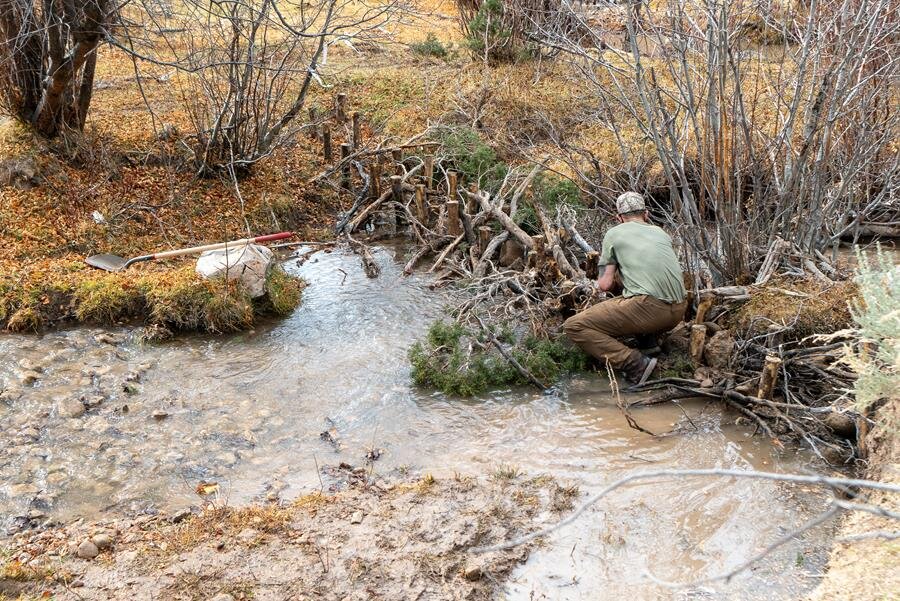Stream Restoration Dates Posted!
Thank you for signing up to learn more about our Stream & Riparian Restoration volunteer days. We're excited to work with you to restore stream habitats for wildlife and human communities. We've just posted lots of new project dates!
Join other volunteers, staff, and partners for a fun day outdoors to heal Utah's degraded streams.
Ready to join? Visit our website to get started.
What to Expect
Plan to get muddy, learn something new about the landscape, carry fence posts, cut branches with hand tools, and construct restoration structures in the stream. You’ll be instructed on the best ways to do this at the project.
A typical day lasts from 9-3pm, with breaks for lunch and snacks.
For more details, review our FAQ page. Each of our upcoming projects also has unique times and details located on our project page. Note that before any given project date, we will send out an email with further specific information to those signed up.
FAQs
What's wrong with Utah's streams? Beaver have been removed from many of Utah's ecosystems, which has meant the loss of their many positive impacts on not only stream and wildlife habitats, but human health and safety as well.
Installing human-made beaver dams works to restore these crucial contributions, including:
Creating aquatic and riparian habitats
Providing hydrological connectivity
Reducing erosion
Offering fire breaks
Controlling sediments
Reducing runoff and floods
Why use human-made beaver dams? Simple restoration tools—such as human-made beaver dams, or "beaver dam analogues"—are a means to achieve the environmental benefits of beaver. Affordable, simple, and effective, this "low-tech" technique is something more and more groups are using in their restoration efforts. In addition to improving the health of degraded areas, this work also paves the way for successful beaver re-establishment, meaning further habitat healing and big benefits for wildlife and humans alike.
Do I need experience or training? No! No formal preparation is required, and you're welcome to join for one day of work or many. You will, however, need to be able to do physical work in the outdoors, including navigating uneven surfaces. Read our FAQ page for more information.
Can't Join This Year?
If you aren't able to join us, consider supporting this work by sharing with family and friends and/or making a sustaining donation. You can also check out our other projects or contact us for information on in-kind donations.
Thank You
Thank you for everything you do to conserve our special habitats in the West. This work would not be possible without you. Please feel free to share this email with anyone else who might be interested.
Do you have questions about getting involved? Feel free to contact us at info@wildutahproject.org




